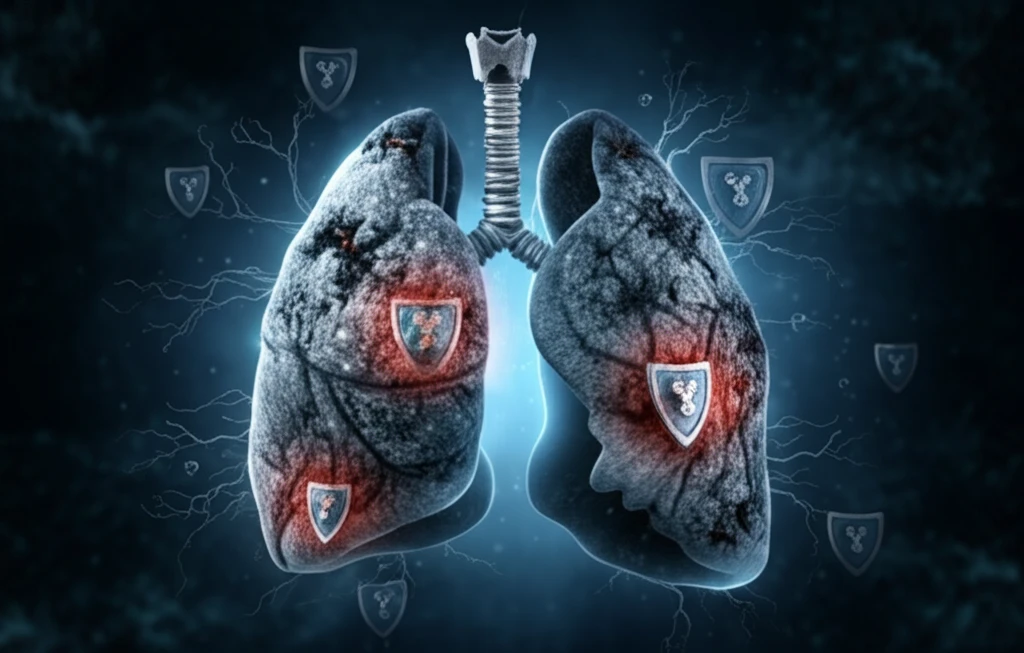
Can a Simple Receptor Hold the Key to Beating Pulmonary Fibrosis?
"New research unveils the surprising role of CRTH2 in lung inflammation and fibrosis, offering potential pathways for novel treatments."
Pulmonary fibrosis, a relentless and often fatal condition, involves the scarring of lung tissue, making it difficult to breathe and diminishing the quality of life for those affected. While some treatments can slow the progression, a cure remains elusive. Recent research has focused on the complex interplay of inflammation and the body's immune response in driving fibrosis.
A study published in the American Journal of Respiratory Cell and Molecular Biology sheds new light on the role of a specific receptor, CRTH2, in pulmonary inflammation and fibrosis. CRTH2, or chemoattractant receptor homologous molecule expressed on Th2 cells, is known to play a significant role in allergic diseases. The study's findings challenge existing assumptions about its function and offer a potentially new therapeutic angle.
Traditionally, CRTH2 has been associated with promoting inflammation, particularly in conditions like asthma. However, this research reveals a surprising twist: a deficiency in CRTH2 actually worsens bleomycin-induced pulmonary inflammation and fibrosis in mice. This unexpected discovery underscores the intricate nature of the immune system and suggests that CRTH2 may have a protective role in certain contexts.
Why CRTH2 Deficiency Leads to Worsened Lung Conditions

The study, led by Soichiro Ueda and Koichi Fukunaga, investigated the impact of CRTH2 deficiency on bleomycin-induced lung injury in mice. Bleomycin is a chemotherapy drug known to cause pulmonary fibrosis as a side effect, making it a useful tool for studying the disease in animal models. Researchers compared CRTH2-deficient mice (CRTH2-/-) with wild-type mice to assess the effects of CRTH2 absence on lung inflammation and fibrosis.
- Increased accumulation of inflammatory cells in the lungs.
- Reduced lung compliance, indicating stiffer lungs.
- Elevated levels of collagen and total protein in the lungs, hallmarks of fibrosis.
- Decreased levels of key cytokines like interferon gamma (IFN-γ), IL-6, IL-10, and IL-17A in bronchoalveolar lavage fluid (BALF).
A New Direction for Pulmonary Fibrosis Research
The study by Ueda, Fukunaga, and their colleagues opens up exciting new avenues for research into pulmonary fibrosis. By demonstrating the protective role of CRTH2 in the context of bleomycin-induced lung injury, they've challenged the conventional wisdom surrounding this receptor and its role in inflammation. This surprising discovery suggests that targeting CRTH2, perhaps by modulating its activity rather than blocking it entirely, could potentially offer a novel therapeutic strategy for combating pulmonary fibrosis.
